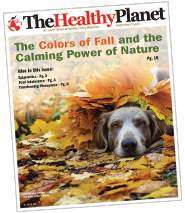Article courtesy of the Clean Air Partnership
Even as concerns related to the ongoing coronavirus pandemic remain top of mind, there is no doubt that air pollution is also a global public health emergency to be conscious of during the remaining summer months when the potential for poor air quality conditions is higher. In recent weeks, the St. Louis metro area has seen its fair share of scorching temperatures and a related increase in the number of days when the air quality has been in unhealthy ranges, particularly for those sensitive populations who are more vulnerable to ozone pollution.
While ozone is not visible to the naked eye, the fact that it can negatively affect one’s health is crystal clear; and those effects can be from both short-term and long-term exposure to ozone pollution. With that in mind, here are five important things to consider when it comes to air pollution:
- Children, older adults and those with existing lung conditions are most at risk. Children and the elderly with developing or weakened immune systems are at greater risk from breathing in polluted air. According to the American Lung Associations 2020 State of the Air report, nearly 22 million adults age 65 and over and 34.2 million children under age 18 live in counties that received an “F” grade for at least one pollutant. Likewise, more than 2.8 million seniors and 5 million children live in counties failing all three tests.
- Nearly five in ten people live in counties with unhealthy levels of ozone pollution. Heat and sunlight combined with hydrocarbons and nitrogen oxides emitted by automobiles, smokestacks and other sources react and form a dangerous ground-level layer known as ozone (smog) that is harmful for everyone to breathe. A shocking 150 million Americans live in 257 counties that are breathing in this unhealthy air. Here in St. Louis, we ranked 28th in the nation overall for most ozone-polluted cities.
- Where you live matters. Studies show that many different pollutants along busy highways may be higher than in the community as a whole, increasing the risk of harm to people who live or work near busy roads. Exposure to traffic pollution can cause asthma attacks in children and a wide range of other effects including poor cognition, impaired lung function, increased risk for dementia as an adult and even premature death.
- Air pollution and poverty go hand in hand. Growing evidence shows that people who have low incomes may face higher risk from air pollution. For example, pollution sources tend to be located near disadvantaged communities, increasing exposure to harmful pollutants. More than 18.7 million people in the U.S. with incomes meeting the federal poverty definition live in counties that received an “F” grade for at least one pollutant.
- You can take action for cleaner air. With the risks from airborne pollution being so great, the Clean Air Partnership encourages area residents to continue their efforts to take voluntary steps to reduce emissions as those actions play a critical role in improving air quality conditions. Walking and biking instead of using a vehicle for short trips, telecommuting, avoiding vehicle idling, as well as carpooling and taking transit once it is again safe to do so can all greatly impact the amount of ozone-forming emissions generated on any given day.
The more you know about the air you breathe, the bigger the difference you can make to help people across the St. Louis region breathe easier.
To learn more about health effects of exposure to air pollution and actions you can take to reduce emissions, visit our website at www.cleanair-stlouis.com, like the Clean Air Partnership on Facebook or follow @gatewaycleanair on Twitter.


